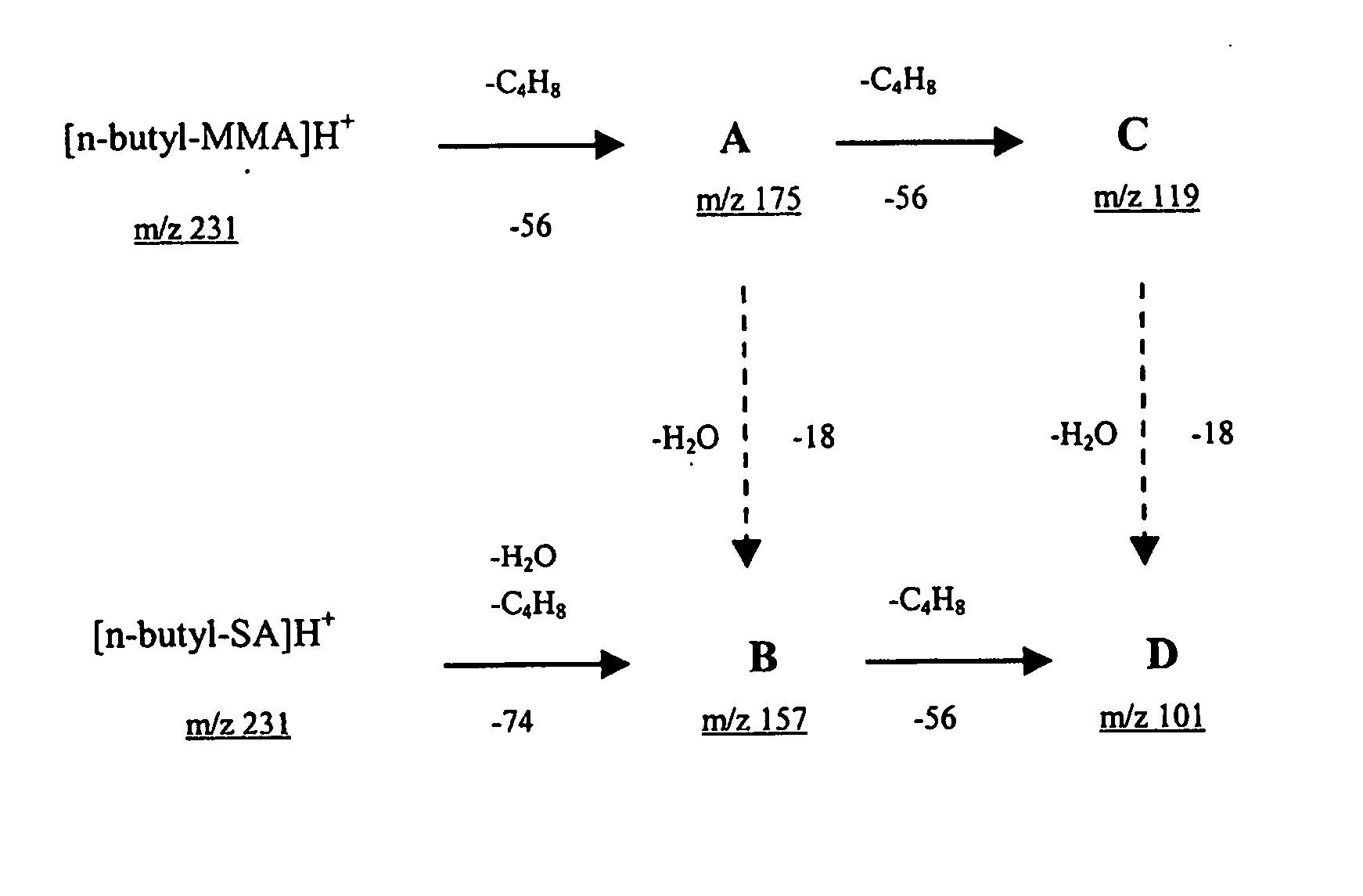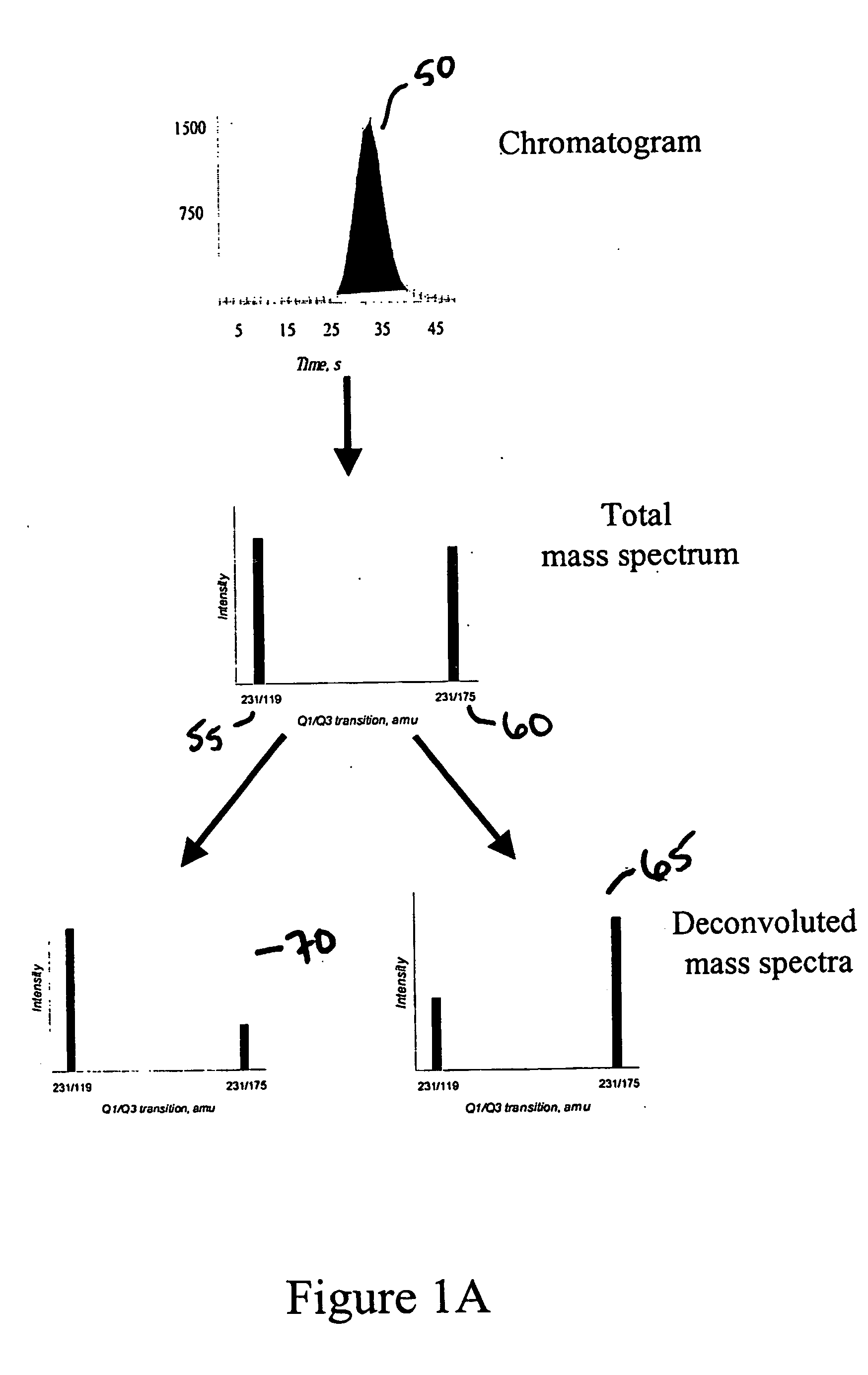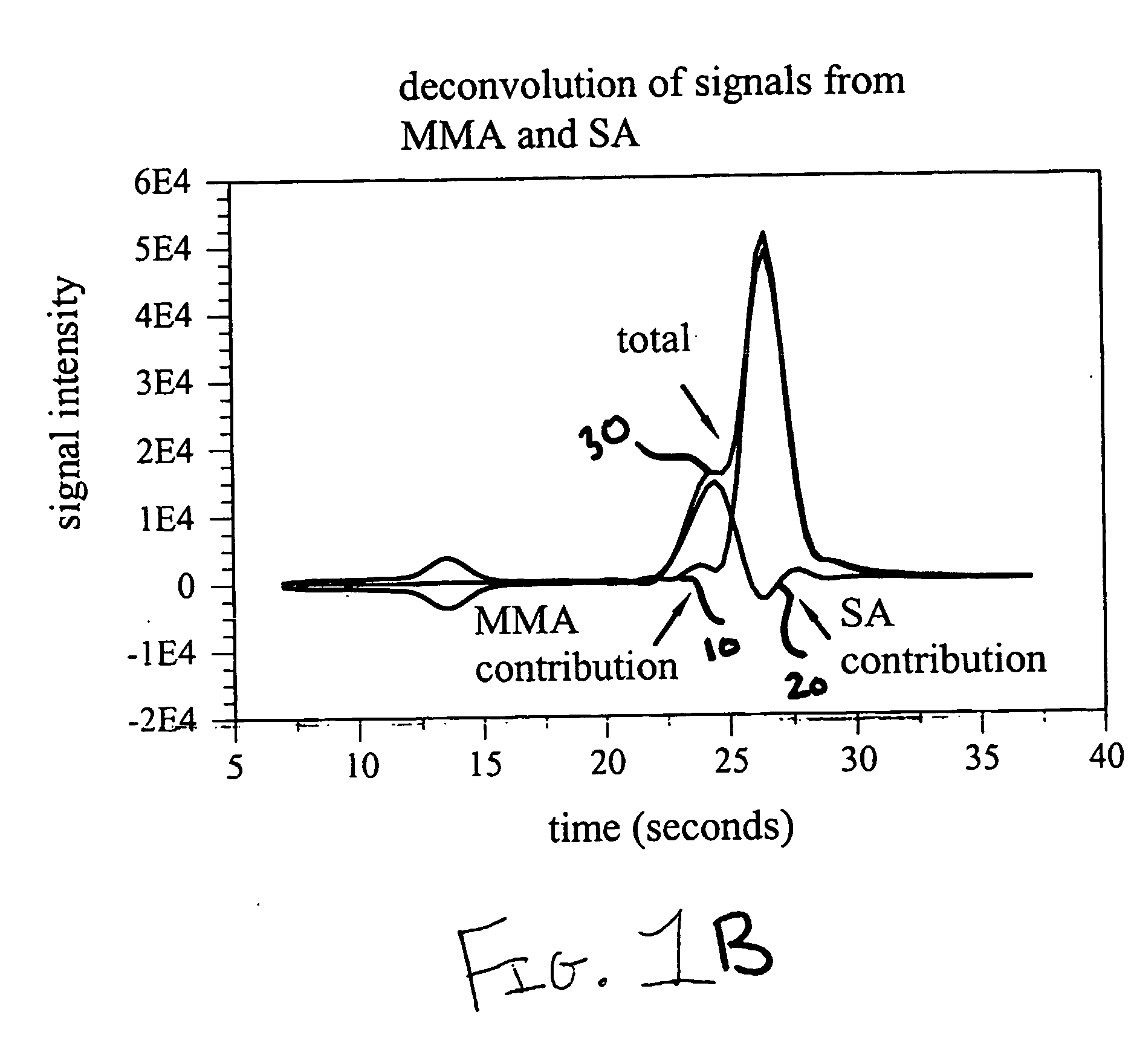Methods for quantitative analysis by tandem mass spectrometry
a mass spectrometry and tandem technology, applied in the field of signal deconvolution, can solve the problems of difficulty in isomer analysis, method does not allow obtaining absolute concentration values, and the analysis of isomers by mass spectrometry is usually complicated
- Summary
- Abstract
- Description
- Claims
- Application Information
AI Technical Summary
Problems solved by technology
Method used
Image
Examples
examples
[0058] Reagents
[0059] Isomers methylmalonic (MMA) and succinic acids (SA), were purchased from Sigma Chemical Co., and d3-MMA was purchased from Cambridge Isotope Laboratories. Methanol, acetonitrile, methyl-tert-butyl ether (MTBE), and phosphoric acid were all HPLC grade from Fisher Scientific. Hydrochloric acid (3 mol / L) in n-butanol was purchased from Regis Technologies, Inc. All other chemicals were of the highest purity commercially available.
[0060] Apparatus
[0061] A PE series 200 HPLC system (Perkin Elmer Analytical Instruments) was equipped with a Luna C18 column 30 mm×3.0 mm, 3 μm particles (Phenomenex). The mobile phase consisted of 85% methanol and 15% 0.005M ammonium formate buffer, pH 6.5. The mobile phase flow rate was 750 μL / min and the LC column effluent split flow was 500-600 μL / min. The column temperature was 40° C., the injection volume was 3 μL, and the injection interval was 60 s. An API 2000 (Applied Biosystems / MDS SCIEX) tandem mass spectrometer was used in ...
PUM
| Property | Measurement | Unit |
|---|---|---|
| flow rate | aaaaa | aaaaa |
| flow rate | aaaaa | aaaaa |
| temperature | aaaaa | aaaaa |
Abstract
Description
Claims
Application Information
 Login to View More
Login to View More - R&D
- Intellectual Property
- Life Sciences
- Materials
- Tech Scout
- Unparalleled Data Quality
- Higher Quality Content
- 60% Fewer Hallucinations
Browse by: Latest US Patents, China's latest patents, Technical Efficacy Thesaurus, Application Domain, Technology Topic, Popular Technical Reports.
© 2025 PatSnap. All rights reserved.Legal|Privacy policy|Modern Slavery Act Transparency Statement|Sitemap|About US| Contact US: help@patsnap.com



